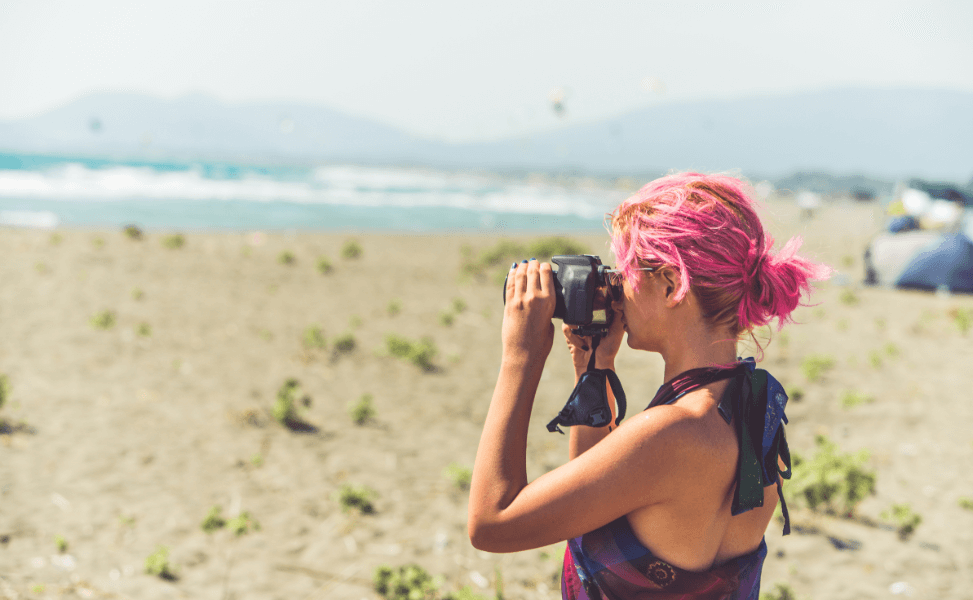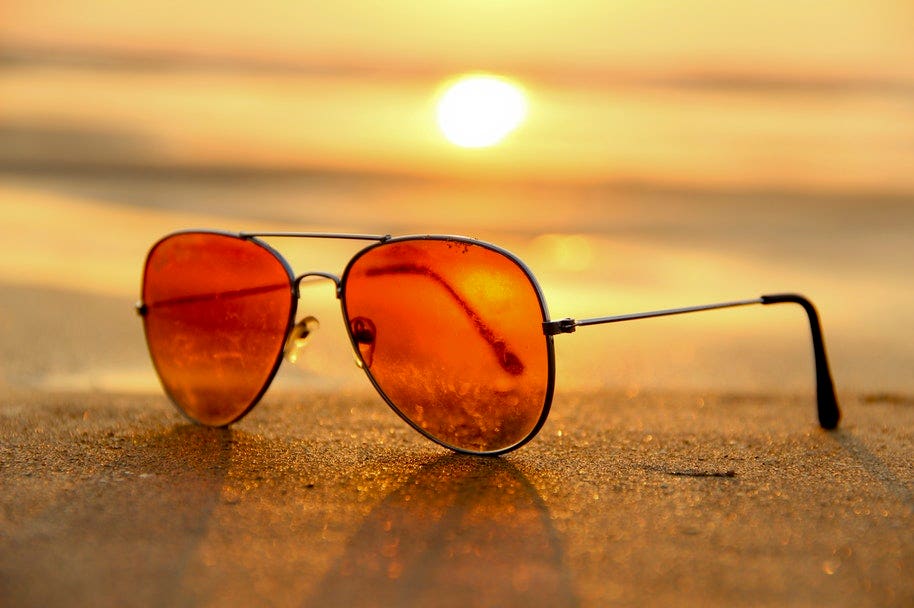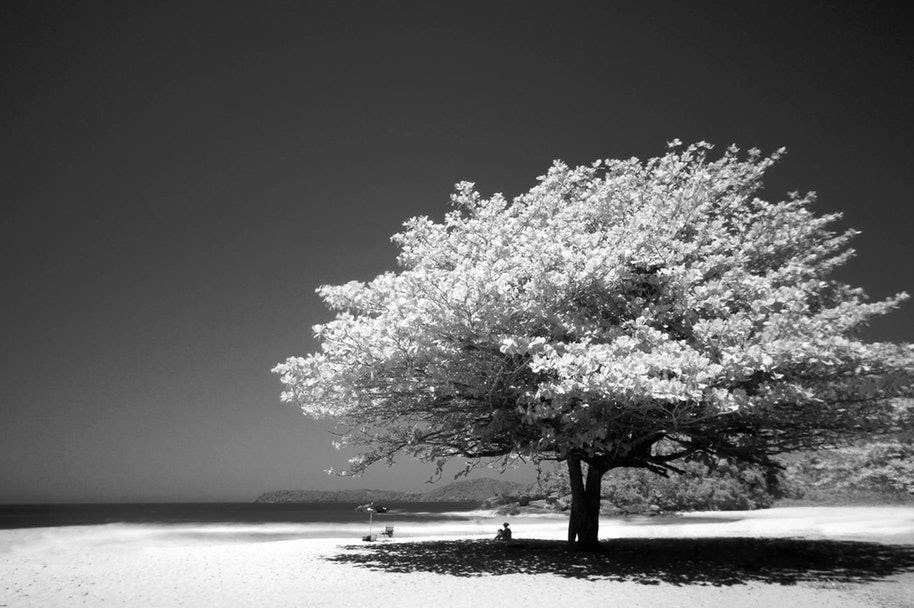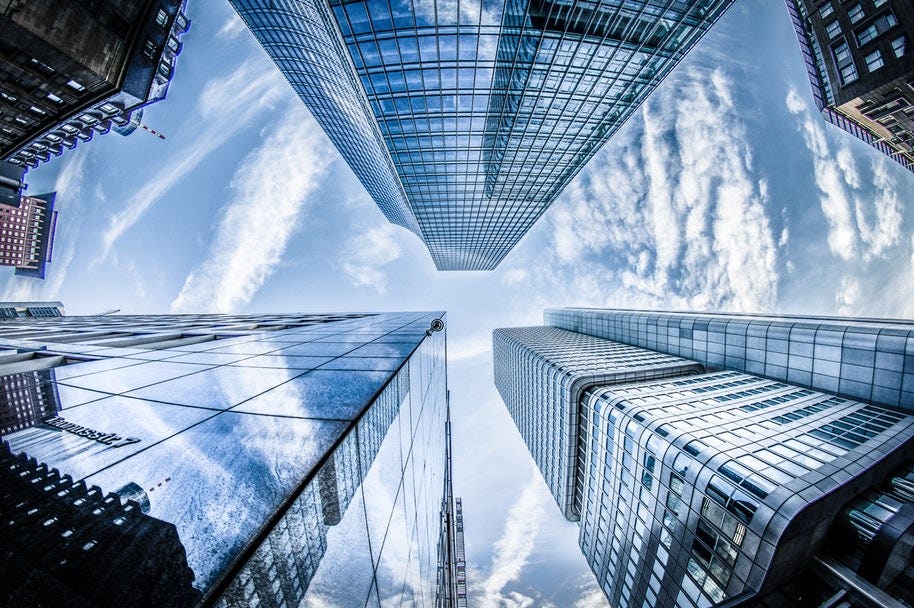
You'd think that the summer would be the ideal time to go outside and take some incredible pictures. But in reality, summer frequently heralds harsh lighting, shadow, contrast, hazy horizons, and dull blue skies. These conditions can unfortunately make it really hard to capture great photographs!
To get on top of this, we’ve outlined our top tips in this article to help you combat white-washed images and capture your favourite summer moments with ease!
Check out our article Winter Photogtaphy Guide on the Camera House blog if you're interested in learning more about seasonal photography for when the weather turns cooler.

1. Move Into The Shade
In the middle of a hot summer day, the sun can often be too harsh to make any photograph work. Try moving into the shade of a tree or buildings to combat the harsh lighting. If you have the time, it can be better to take images in the early morning or late afternoon when the sun is at its weakest to capture images with softer light.
2. Use a filter
By adding a polarizing filter to your camera, you can reduce the exposure by as much as two stops. This will help compat the harsh sun on those starkly bright summer days. Along with deepening blue skies in the image, a polarising lens filter will:
- Emphasises clouds
- Eliminates reflections
- Reduces glare and haze
- Cuts down on reflections in water
- Boosts colour saturation.
We recommend trying the ProMaster Circular Polariser Standard 58mm Filter to combat too much exposure. ProMaster have polarising lens filters in a range of sizes to match your lens.
Lens polarisers have the ability to drop two stops of exposure, which can make it a little trickier to get the shutter speed right. You will want to adjust this to see what works best for you camera and potentially try a tripod or mount to get achieve images.
3. Use lens hood
A lens hood works to eliminate glare and lens flare by adding shade over the top of the lens to obscure the sun or another light souce. Without needing to use a lens cover, lens hoods can also be used to shield your lens from scuffs and weather, such as rain. This is a great solution when there’s no shade nearby.
Check out Olympus’ range of lens hoods such as the Olympus LH-61E Lens Hood which delivers protection from both light glare and the elements. It’s both great quality and highly reliable.
3. Master your white balance
You can capture images that better capture your vision by altering the white balance settings on your camera. This works to change how the light source and how bright this is appearing.
In your camera settings, selecting daylight mode will produce a crisp and accurate white tone which may be accurate for your scene. Alternatively, sometimes cloudy mode can add a more dramatic, warm touch by adding yellow and red tones to your shot.
On many cameras you can preview the results on your LCD screen before you take the shot while shooting in RAW. This provides you the opportunity to adjust the tones or correct the setting in post-production.

4. Play with background light
It can be helpful to get artistic with background light to create interesting and well lit images. Place your subject, such as a person, a tree, or a structure, in front of a vivid background to highlight the details in their silhouette or create striking sunbursts.
Your background doesn't have to be a magnificent sky or sunset to make a good silhouette. It may be as basic as a water surface that reflects light.
To produce flare when photographing in the middle of the day, try shooting from a low angle. It only needs to be shining across the lens element for the sun to cause lens flare. However, if you want a full sunburst, you must place your subject in front of the sun while keeping it partially obscured.
Check out our article Beware the Summer Sun: Tips for Taking Photos in Direct Sunlight on the Camera House blog if you're interested in learning more about these techniques.

5. Go black & white
Sometimes, the environment and lighting just aren't going to cooperate. Don't fully disregard your photos in these cases. Make your photoshoot in black and white as an experiment.
Monochrome images emphasise shadows for more drama and are especially effective on cloudless city days when there are lots of shadows.
In these cases, use your camera's combined RAW and JPEG modes. Setting the picture style on your camera to Monochrome will help you get enough data for post-production so you can edit them to your desired style. This can also be really helpful to edit film photography to black and white when the lighting hasn’t turned out as you expected.
6. Use a reflector
A reflector gives you the ability to direct where you are adding light to a scene in photography. This is really helpful to angle harsh summer sunlight in your favour, helping to lift shaddows and brighten subjects.
A natural reflector uses materials that are already present or that are found to reflect light back onto your subject. This means you’ll have to carry less equipment and are easier if you’re shooting images on your own.
Artificial reflectors can be easier to direct light and you can get them in a range of different tones to manipulate the colouring in the images lighting. They are also available in a range of sizes to make it easier to carry them with you when shooting in different locations.

7. Change your perspective
Have fun with summer photography and experiment with what works for you! There are a range of different techniques you can employ to avoid white washed images but it takes practice to establish what works best with your photography style.
Our key takeaways on how to experiment in summer photography are:
- Try taking images in the shade.
- Use a polarising lens cap or a lens hood.
- Play with the white balance settings.
- Get artistic with background light.
- Edit or take your images black and white to make the most of strong contrast.
- Try and redirect the sunlight with a natural or artificial light reflector.
If in doubt, our friendly team at Camera House are always happy to help answer your questions about summer photography techniques both online and in-store!
Shop Summer Photography Gear at Camera House
Take advantage of Camera House’s knowledgeable staff in-store and online and ask them all about what cameras and equipment are best for summer photography! Check out our shipping information online and enjoy flat-rate delivery Australia-wide, or check out our store locator to visit a Camera House store near you.
